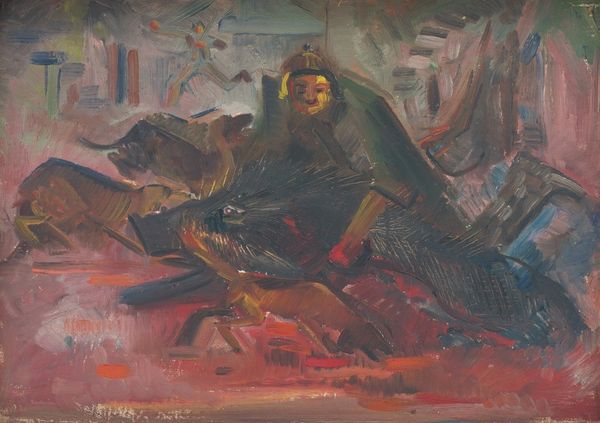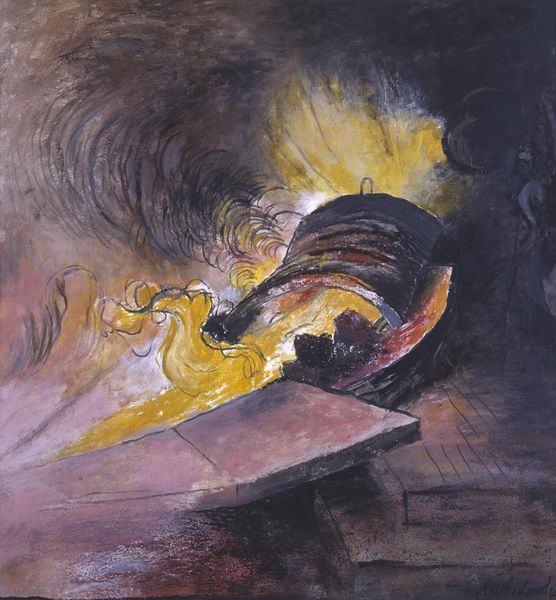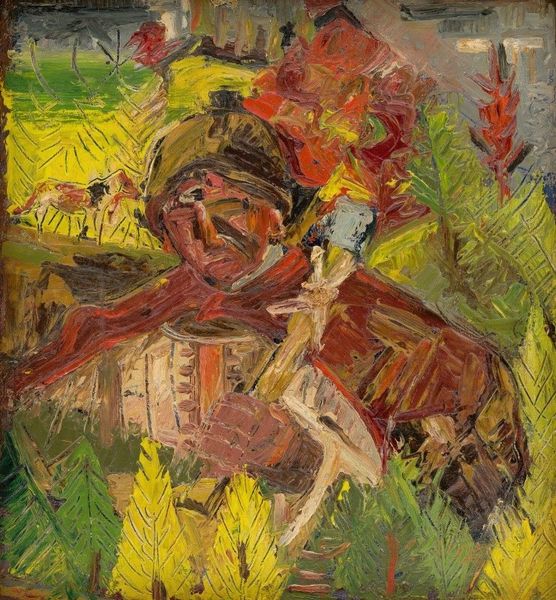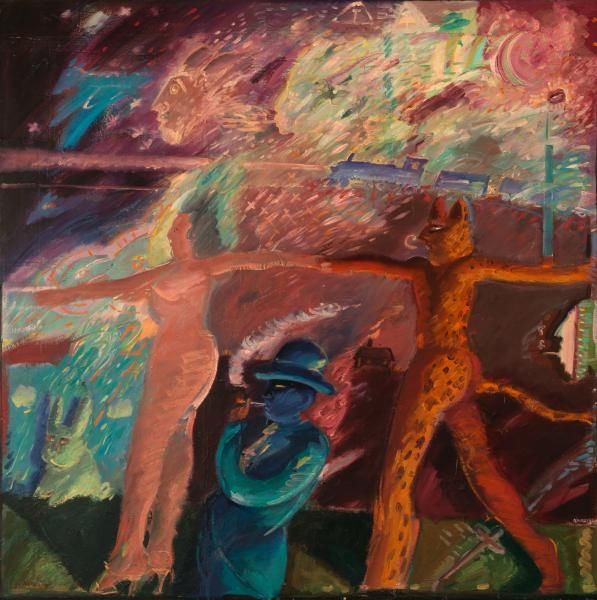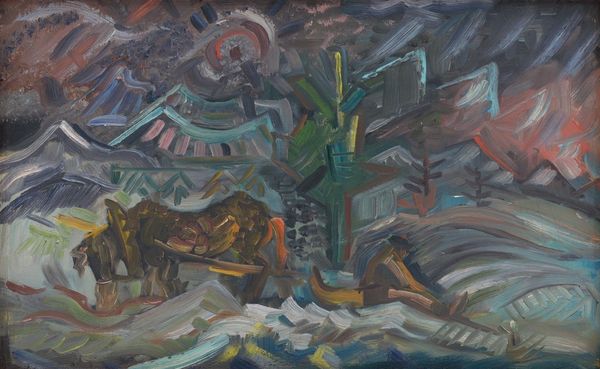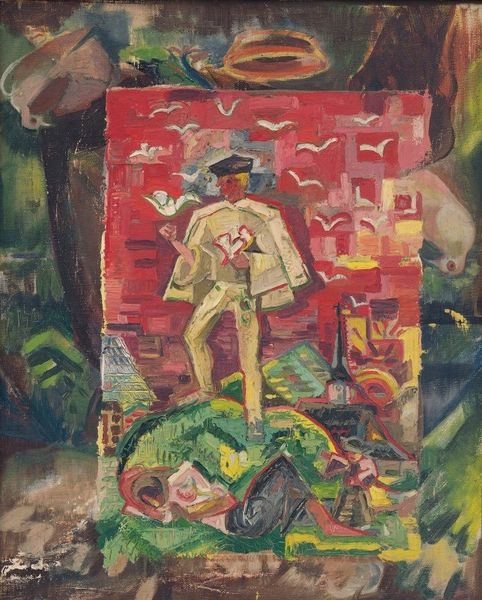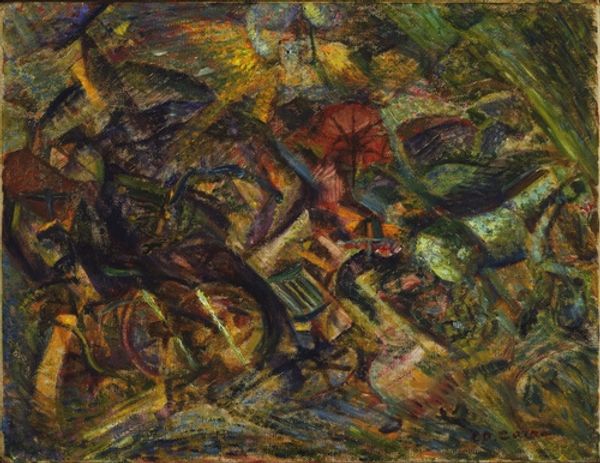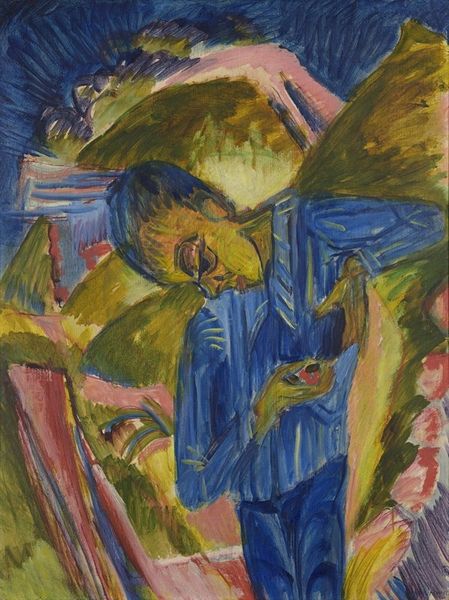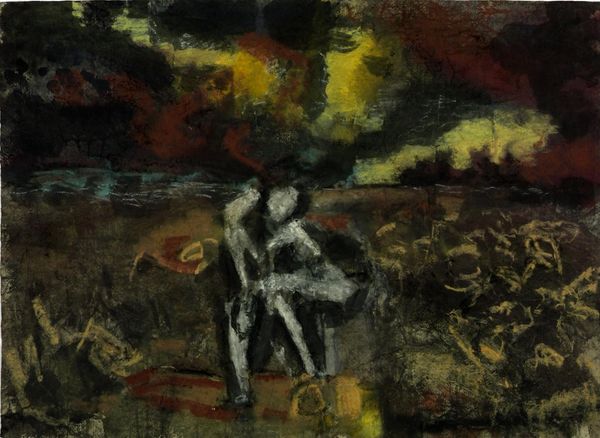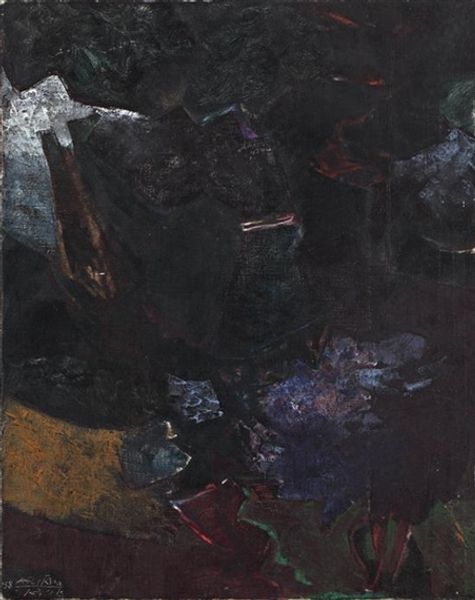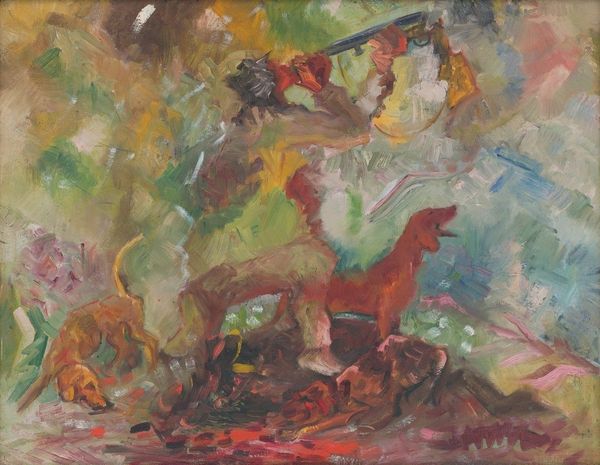
Copyright: Public Domain: Artvee
Editor: This is "Dawn," an oil painting by Arnold Peter Weisz-Kubínčan, created in 1941. The colors are striking, especially the fiery reds and yellows against the darker greens. It feels… intense, maybe even a little unsettling. What do you see in this piece, looking at it formally? Curator: The strength of this painting, primarily, exists in the interplay of colour and brushstroke. Observe how the artist uses short, gestural strokes to construct forms. This is evident in the rendering of the figure, particularly the face, which is barely representational. What strikes you about that relationship? Editor: I guess it's the tension? Like, the rough brushstrokes give a sense of movement, but the figure is looking upwards almost rigidly. Curator: Precisely. Now, shift your focus to the colour palette. Notice the dramatic contrast between the warm hues in the upper register – the reds, yellows, and oranges – and the cool greens and blues that dominate the lower portion of the canvas. Consider the structural role those colors play in your understanding of the form in front of you. Editor: The warmer colors definitely draw your eye upwards. They almost feel oppressive. And I'm also seeing these repeating triangles between the colors and composition elements; for instance, between the line from the horizon and the figures shoulder... Curator: Excellent observation. Note also the absence of hard lines. Boundaries blur. Color fields meet and clash. The light isn't natural, it’s expressionistic. The figure’s posture in relation to this skewed perspective introduces emotional complexity through pure formalism. It's about raw visual relationships and how they create feeling. Editor: So, even without knowing the story, the composition itself conveys the emotion? Curator: Precisely. Kubínčan manipulates colour and form to express interiority, without necessarily requiring the crutch of explicit narrative or contextual background. Editor: That makes so much sense. I was getting caught up in trying to figure out what was happening. Curator: It's in these purely visual cues that art often achieves its greatest impact. Editor: Thanks, it’s helped me see the painting from a completely different viewpoint.
Comments
No comments
Be the first to comment and join the conversation on the ultimate creative platform.
